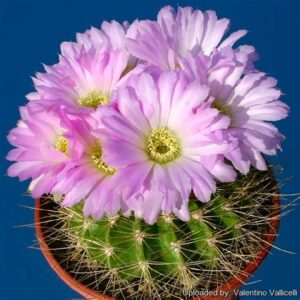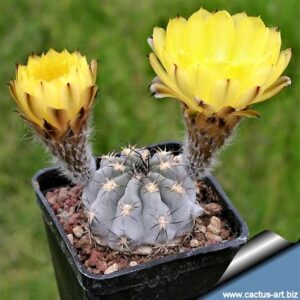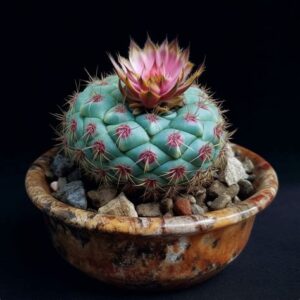As a cactus aficionado, you might have heard of the Acanthocalycium spiniflorum. This peculiar entity in the vast family of cacti showcases a myriad of intriguing characteristics that make it a prized specimen among collectors and enthusiasts. But what exactly sets this cactus apart from its peers? This guide delves into the multifaceted nature of Acanthocalycium spiniflorum, providing you with essential insights and a comprehensive understanding of its attributes and care requirements.
Imagine you’re an explorer in the arid landscapes of South America, stumbling upon a stunning cactus that seems to embody the very spirit of resilience and beauty. Could you be challenged to maintain its delicate balance between aesthetic allure and environmental needs? This exploration may provide the key to mastering the art of cactus cultivation.
Let us embark on this enlightening journey into the characteristics of Acanthocalycium spiniflorum.
Delve into the Aesthetic Charm of Acanthocalycium Spiniflorum
The appearance of Acanthocalycium spiniflorum is nothing short of enchanting. With its globular shape and vibrant coloration, this cactus is a feast for the eyes. Typically, it presents a deep green body adorned with numerous spines that can range in color from white to a striking yellowish hue. The spines vary in length, leading to a unique textural diversity that adds visual interest to the cactus’ overall profile.
One of the most captivating features of this cactus is its flowering. During the blooming season, Acanthocalycium spiniflorum is adorned with large, funnel-shaped flowers. These blossoms can appear in shades of pink, red, or orange, contrasting elegantly with the cactus body. Each flower emerges from the crown of the cactus and can reach diameters of up to 4 inches, creating a stunning spectacle that can last for several days, particularly during optimal growing conditions.
This display of color not only enhances its ornamental value but also serves a vital ecological function, attracting pollinators such as bees and hummingbirds, which play a crucial role in the plant’s reproductive cycle. The dynamic interplay between aesthetics and function makes Acanthocalycium spiniflorum a fascinating subject of study.
Ecological Origins and Natural Habitat
Understanding the natural habitat of Acanthocalycium spiniflorum provides insight into its ecological requirements and growth behavior. Native to the arid regions of Argentina, this cactus thrives at elevations ranging from 1,200 to 2,000 meters above sea level. Its natural environment presents a juxtaposition of extreme aridity and seasonal rainfall, which has shaped its evolutionary strategies.
The cactus grows in rocky, well-drained soils that often contain a high percentage of organic matter. Such substrates enable effective drainage, preventing root rot—a common challenge for many succulent species. The geographical range of Acanthocalycium spiniflorum is characterized by relatively mild temperatures, with a distinct dry season followed by sporadic rainfall, allowing the plant to conserve moisture efficiently.
As a potential challenge, cultivators must replicate these conditions to ensure the healthy growth of Acanthocalycium spiniflorum in non-native environments. Hence, creating a microhabitat that mirrors its native ecosystem becomes paramount.
Mastering Acanthocalycium Spiniflorum Care
To ensure that Acanthocalycium spiniflorum flourishes under your care, it is imperative to understand its specific requirements for sunlight, watering, soil, and temperature.
Sunlight Requirements
Acanthocalycium spiniflorum thrives in conditions of direct sunlight. A minimum of six hours of sunlight per day is essential to encourage robust growth and the vitality of its iconic blooms. Indoors, placing it near a south or west-facing window provides adequate exposure. If kept outdoors, make sure the cactus is shielded in extreme heat to prevent sunburn.
Watering Practices
Correct watering techniques are pivotal to cactus health. During the growing season—typically spring and summer—watering should be done thoroughly but infrequently, allowing the soil to dry out between watering sessions. In contrast, during winter dormancy, watering should be drastically reduced, as the plant requires minimal moisture during this phase.
Overwatering remains one of the gravest threats to Acanthocalycium spiniflorum, leading to root rot and eventual demise. Cultivators often opt for a “soak and dry” method—soaking the plant until water drains freely from the bottom, followed by allowing the potting medium to completely dry out before the next watering.
Soil Structure and Composition
Choosing the right soil mixture is a critical factor in cultivating successful specimens of Acanthocalycium spiniflorum. A well-draining potting mix composed of coarse sand, perlite, and peat moss or compost provides the ideal environment. These components allow for necessary aeration and prevent retention of excess moisture, which is detrimental to the cactus’ root system.
Temperature and Humidity Tolerance
This species prefers warmer temperatures, typically ranging from 65°F to 80°F during the day. However, it can tolerate brief drops to 50°F at night, especially during winter dormancy. Additionally, Acanthocalycium spiniflorum flourishes in low humidity environments, mirroring its natural habitat. Excessive humidity can lead to fungal issues, underscoring the importance of ventilation in its growing area.
Propagation: The Joy of Cultivating New Specimens
One of the appealing aspects of Acanthocalycium spiniflorum is its ease of propagation, making it a rewarding endeavor for both novice gardeners and seasoned cultivators. The cactus can be readily propagated through seeds or offsets, offering two paths to expand your cactus collection.
Seed propagation involves sowing seeds in a well-draining potting mix and keeping them warm and moist until germination occurs. It is crucial to provide adequate light and maintain a humid environment to enhance germination success. On the other hand, offsets or “pups” that arise from the base of the cactus can be carefully removed and re-potted, creating new plants with the same genetic characteristics as their parent.
Potential Pests and Diseases
Despite its robust nature, Acanthocalycium spiniflorum is susceptible to certain pests and diseases. Common adversaries include mealybugs, spider mites, and scale insects, which can detrimentally impact the plant’s health. Vigilant monitoring and prompt intervention—such as insecticidal soap or neem oil treatments—are essential for management.
In conclusion, Acanthocalycium spiniflorum stands out for its aesthetic appeal, ecological origins, and relative ease of care. By understanding its unique characteristics and fulfilling its environmental requirements, you can cultivate a healthy and thriving specimen. Just as with any floral endeavor, challenges will present themselves; however, the rewarding journey of nurturing this captivating cactus is well worth the effort. Will you rise to the challenge and embrace the intriguing world of Acanthocalycium spiniflorum? The adventure awaits, and the rewards may mesmerize both you and the plant itself.





Leave a Comment